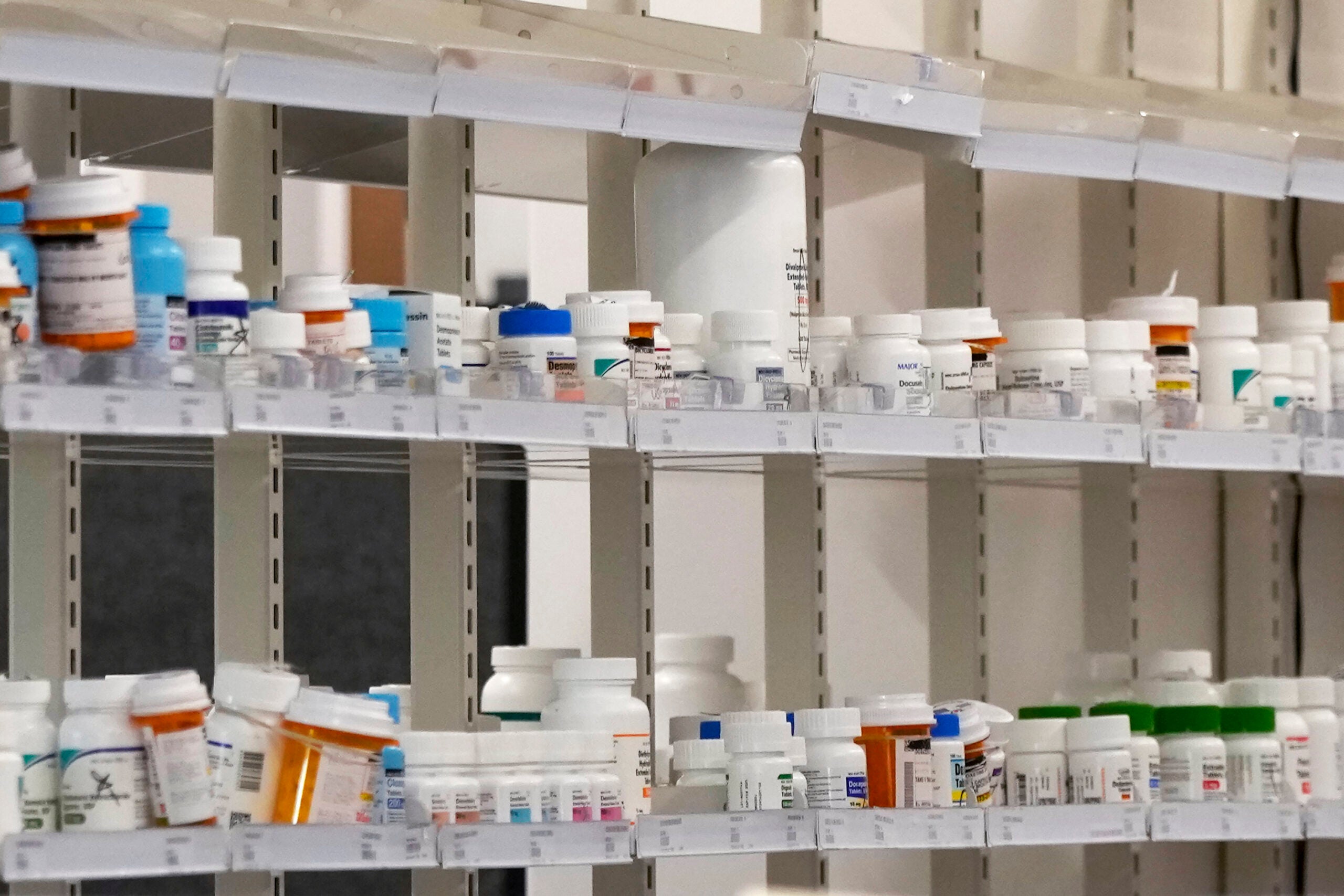Norbert Salamonski recently retired from working as a pharmacist at Walgreens in Marshfield. Based on his experience, Salamonski said he’s not surprised to see pharmacists and technicians walking out at retail pharmacy chains across the country.
After walkouts at CVS stores in September and at Walgreens earlier this month, national media outlets reported on Monday that organizers at both chains were planning additional walkouts over the next three days.
While none of those labor actions have happened in Wisconsin so far, Salamonski said pharmacy staff have struggled with a growing workload and declining staffing for years. He said that problem only worsened with the COVID-19 pandemic.
News with a little more humanity
WPR’s “Wisconsin Today” newsletter keeps you connected to the state you love without feeling overwhelmed. No paywall. No agenda. No corporate filter.
“In 1999 when I started, a busy day would be maybe 250 scripts and that’s just regular prescriptions, an occasional compound of some ointments,” he said. “Today, we’re doing 1,000 a day, which includes compounding all the vaccines with no increase in hours of help.”
Salamonski said pharmacists often don’t get a break or have the opportunity to sit during their nine-hour shift behind the counter, which includes running between the drive-up and in-store windows, preparing prescriptions and administering vaccines. He said pharmacy technicians are critical to taking on the increased workload, but many positions that were once full-time were reduced to part-time jobs in recent years.
At the same time, Salamonski said pharmacy staff are experiencing an increasing number of patient outbursts and harassment when medicines aren’t covered by insurance or when there are shortages from the manufacturer.
He said all of these factors have led to increased burnout among both pharmacists and technicians. It’s one of the reasons he chose to retire last year, on top of his frustration over what he describes as a lack of understanding and appreciation shown by corporate officials.
Fraser Engerman, senior director of external relations for Walgreens, said in an email the company has “taken a number of steps in our pharmacies to ensure that our teams can concentrate on providing optimal patient care.” He said the company is focused on how they recruit, retain and reward staff, and have worked to centralize operations “to help maintain appropriate workloads in our pharmacies.”
Engerman said only two pharmacies out of the company’s nearly 9,000 were closed on Monday due to “workforce disruptions” and one was closed today. None of the closures were in Wisconsin.
Although Wisconsin locations haven’t joined walkouts, Pharmacy Society of Wisconsin CEO Sarah Sorum said many pharmacists in the state have joined the calls for industry-wide change.
“I talk with our members every week about these issues, whether it be patient expectations, health plan challenges, staffing issues, shortages of pharmacy technicians,” said Sorum, who is also a pharmacist. “Those are all topics that are coming up on a weekly basis. They’re urgent issues that need conversation, and they’re complex.”
Sorum said pharmacies have experienced the same issues with recruiting and retaining employees that have been seen across healthcare and other industries. She said they’ve also seen their responsibilities expanded, with more people coming to pharmacies for vaccines and testing that started with COVID-19 but have since expanded.
Pandemic created traumatizing conditions
And like many in health care, Sorum said pharmacy staff have felt the toll of increased needs during the pandemic.
“We really have a workforce that’s been traumatized,” Sorum said. “Being under the immense pressures of some practice settings and some health care situations, we really know that there’s things that need to evolve and change so that health care workers aren’t retraumatized day after day.”
In some cases, Sorum said, pharmacies aren’t motivated or sometimes aren’t able to expand their staff because they’re dispensing some medications at a financial loss. She said pharmacy benefit managers, the third-party administrators that are responsible for processing prescription claims through insurance, get to dictate what they’re willing to pay for a drug, regardless of what a pharmacy is paying their suppliers.
“Now the largest PBMs in the country also own their own pharmacies,” she said. “They’re incentivized to direct their beneficiaries to their pharmacies, and there really is very little incentive for them to appropriately reimburse pharmacies outside of that.”
She said the consolidation leaves patients without a choice on where they can receive their medications. And she said it’s why many pharmacies have expanded services to include more vaccinations and testing in order to get more favorable reimbursements from insurance companies. She said Wisconsin’s Medicaid program, BadgerCare, will soon recognize pharmacists as health care providers in order for patients to be able to submit claims for the care they receive for managing chronic diseases like diabetes, which she described as a win for the pharmacy industry.
With news of the walkouts making national headlines, Sorum worries it will affect how pharmacy students and those beginning their careers are thinking about their place in the industry.
But Salamonski thinks the issue needs to be brought to the public’s attention because it could have a significant impact on patient safety. He said pharmacists have to be laser-focused on the details of every prescription, ensuring the correct dosage, monitoring for allergies and more.
“We’re in a position that if we cannot do our job effectively, or if we miss something, we can absolutely severely hurt somebody,” he said. “We don’t want to be walking out of work going, ‘Oh my gosh, what did I miss today?’ And believe it or not, that happens. But that’s not the way you want to practice.”
Wisconsin Public Radio, © Copyright 2026, Board of Regents of the University of Wisconsin System and Wisconsin Educational Communications Board.





